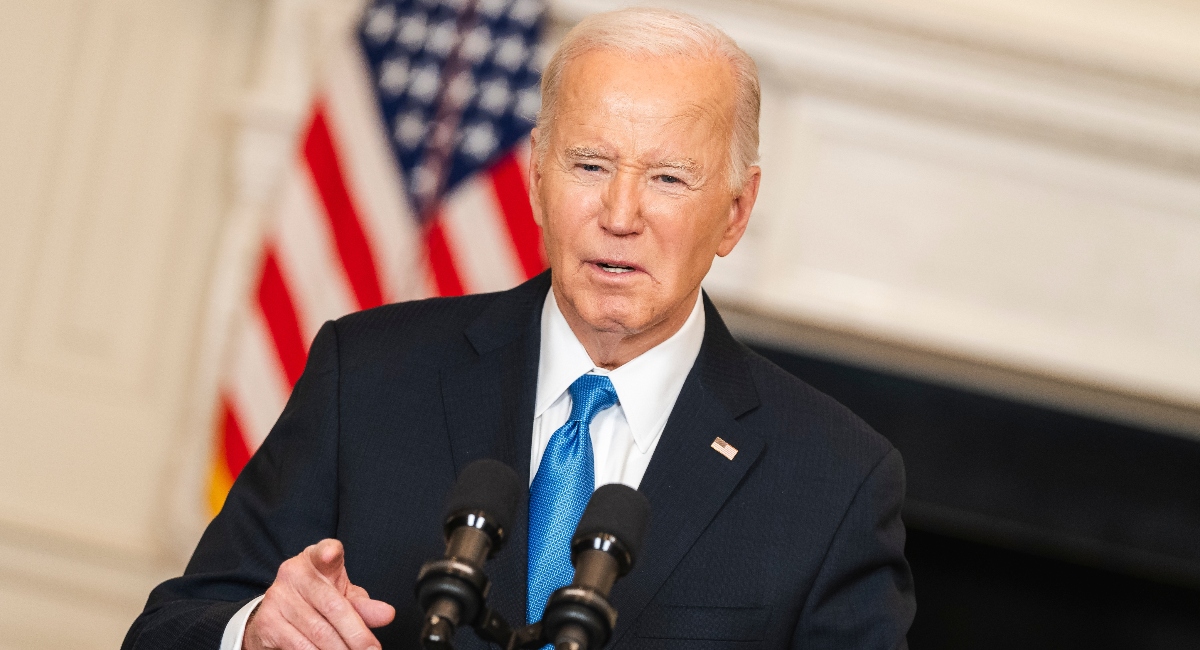
Biden’s New Hardship Student Loan Forgiveness Plan: 6 Critical Insights
The Biden administration last month published formal regulations for a new program designed to provide student loan forgiveness for borrowers experiencing hardship.Administration officials estimate that if the program is successfully launched, at least eight million federal student loan borrowers could see their balances wiped away.“For far too long, our broken student loan system has made it too hard for borrowers experiencing heartbreaking and financially devastating hardships to access relief, and it’s not right,” said U.S.Secretary of Education Miguel Cardona in a statement in October.
“The rules proposed by the Biden-Harris Administration today would provide hope to millions of struggling Americans whose challenges may make them eligible for student debt relief.President Biden, Vice President Harris, and I will not stop fighting to deliver student debt relief and create a fairer, more just, and more affordable student loan system for all borrowers.” The new program is part of the administration’s broader initiative to establish a new loan forgiveness plan in place of Biden’s initial debt relief program that the Supreme Court overturned last year.Dubbed “Plan B,” this new program relies on a different legal authority.It is being created through a separate process, which officials had hoped would help insulate the plan from legal challenges.
So far, however, they have not been successful, as an earlier component of “Plan B” student loan forgiveness was just blocked by a federal court in Missouri last month (before it was even formally launched or the rules were finalized).If this new hardship pathway for student loan forgiveness is successful, borrowers will have several ways to qualify.Here’s what to know about the program and what to expect as the launch process moves forward (for now). Automatic student loan forgiveness for some Under the plan, some borrowers experiencing hardship would automatically qualify for student loan forgiveness, with no specific action or application required.“The first pathway would recognize the Secretary’s authority to grant individualized, automatic relief without an application,” said the department’s announcement.
“The Secretary could provide relief on a one-time basis to borrowers who the Department determines, based on a predictive assessment using existing borrower data, have at least an 80% chance of being in default within the next two years.” “The Secretary could then waive those loans to address hardships and prevent the severe consequences of default,” says the department.Department officials would review available data such as loan balances, repayment history, income, and loan status.“The Secretary could then waive those loans to address hardships and prevent the severe consequences of default,” says the department.Related: How to Use Your National Student Loan Data System (NSLDS) Data File Applying for forgiveness: When automatic relief isn’t available Other borrowers would need to apply for hardship-based student loan forgiveness.
The Education Department would then evaluate requests for debt relief on a case-by-case basis.“The second pathway would allow current and future cohorts of borrowers to receive relief based on a holistic assessment of the borrower’s hardship and would be primarily application-based,” explains the department.“The Department would holistically assess whether a borrower is highly likely to be in default or experience similarly severe negative and persistent circumstances.If no other payment relief option exists to sufficiently address the borrower’s persistent hardship, the Secretary could waive the loan.
The Secretary would stand up an application to begin to holistically assess borrower circumstances.” Nearly 20 indicators of hardship, with flexibility for student loan forgiveness review The newly published regulations for the program provide close to 20 separate “indicators” that suggest a borrower may be experiencing hardship and, therefore, may be eligible for student loan forgiveness.These criteria include the borrower’s: Income Assets Student loan details (including balances and repayment obligations) Other debts and other significant financial obligations (such as medical expenses or caregiving responsibilities, which are typically not factored into programs like income-driven repayment plans) Pell Grant and other need-based aid eligibility Concurrent eligibility for need-based government assistance programs Age and disability status Flexibility in applying hardship criteria Importantly, under the program’s proposed rules, there is flexibility in applying these criteria.In addition to the outlined hardship indicators, Education Department officials could consider “any other indicators of hardship identified by the Secretary.” And the department can consider specific hardship indicators individually or in combination with other factors.“We do not anticipate that the Secretary would need to evaluate every factor in proposed § 30.91(b) for a given borrower,” says Education Department commentary published in conjunction with the proposed new regulations.
“Rather, these factors identify different items that could be considered, either individually or in concert with other factors in proposed § 30.91(b), to make determinations of whether the borrower is eligible for relief.There are some factors that, might be sufficient with only limited additional evidence to determine a borrower is eligible for relief.By contrast, there are other factors that are likely to serve as contributing factors, but that would likely require several more factors to sufficiently demonstrate that the borrower is eligible for relief.” The department may ultimately evaluate the “interplay” between various hardship indicators to determine whether the borrower is eligible for student loan forgiveness. The publication of the proposed new regulations in the Federal Register now triggers a 30-day period during which members of the public may submit formal comments about the rules, which could result in changes to the final version of the program. “We must receive your comments on or before December 2, 2024,” says the department, noting the end of the 30-day comment period.Public comments are taken seriously by the department, and it’s one reason that the hardship-based option for student loan forgiveness was created in the first place.
Public comments are taken seriously by the department, and it’s one reason that the hardship-based option for student loan forgiveness was created in the first place — there was a barrage of public comments following the initial release of draft regulations for the first component of “Plan B” student loan forgiveness, demanding a hardship-based pathway for relief.When will hardship loan forgiveness be available? It’s important to note that this hardship-based student loan forgiveness program is not yet available.The publication of the regulations, followed by the public comment period, are critical steps in what is a somewhat lengthy administrative process. After the public comment period ends, the department will review the comments, and officials will decide whether or not to make any changes or tweaks to the regulatory text.Then, over the subsequent months, the department will finalize the regulations.
“The Department expects to finalize the regulations in 2025,” says the department.Typically, regulations of this type are finalized on July 1 of the calendar year. Legal challenges could derail hardship student loan forgiveness But don’t celebrate quite yet — the program is widely expected to face legal challenges.The Biden administration has had somewhat mixed success in implementing student loan forgiveness and relief programs in the face of court challenges, largely brought by Republican-led states and aligned legal organizations.Officials have largely succeeded in expanding relief through the Public Service Loan Forgiveness (PSLF) program, as well as the Total and Permanent Disability (TPD) discharge program, resulting in hundreds of thousands of borrowers receiving student loan forgiveness.
A legal challenge to the one-time IDR Account Adjustment initiative failed last year.
But other programs, such as Biden’s first attempt at mass student loan forgiveness, were rejected by federal courts.Several initiatives, such as the first component of Plan B student loan forgiveness, the Saving on a Valuable Education (SAVE) plan, and new Borrower Defense to Repayment regulations, all remain blocked under injunctions as legal challenges against the administration continue.Time will tell if hardship-based student loan forgiveness becomes a reality or meets the same fate as several other recent debt relief programs.
Publisher: Source link





